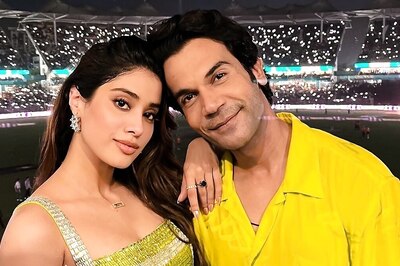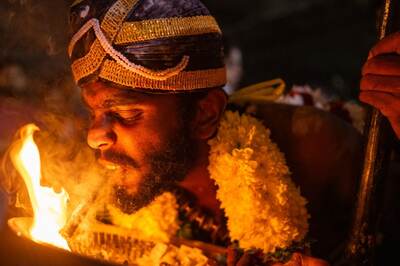
views
Former Member of Parliament and diplomat Pavan K Varma’s latest preoccupation is Ram. His latest book 'The Greatest Ode to Lord Ram' is based on 16th century Bhakti poet Tulsidas’s Ramcharitmanas. Speaking to News18.com, Varma underscored the relevance of the book at a time when the religious deity has been "militarised" by certain politicians and some sections of society with expressions of resentment against those who don’t chant "Jai Shree Ram". He argued that moves like the Citizenship Amendment Act (CAA) and National Register of Citizens (NRC) are against Indian traditional thought and heritage.
Your book on Lord Ram has come at a time when we have seen people being lynched for not chanting ‘Jai Shree Ram’.
I think it is very important, especially today, to understand the sheer grandeur of Maryada Purushottam Lord Ram. He stood for the highest concepts of duty, order, compassion, love, grace of rectitude, and we must know he was meant to be the perfect role model for human beings. It is particularly important today, because there are occasional instances of a few people using the name of Shri Ram for acts of wanton cruelty, hostility, anger and vengeance while Shri Ram stood for what is right. He was always a symbol of great grace and compassion even against his rival. This is brought out in the remarkable epic Ramcharitmanas written by Goswami Tulsidas, the 16th century Bhakti poet. If one goes through the writings of Tulsidas, one will understand the veracity of what I am saying. For instance, when Ram is born, Tulsidas has a verse about his birth, which is, “Now is born the merciful, the protector of the weak.” For him, Ram is the very ocean of compassion.
When Rama meets Kaikai, who has banished him for exile, he is neither vengeful nor angry. On the contrary, Ram says, "O mother, that child is indeed fortunate, who has the opportunity to obey his mother and father." So it is this Ram we must understand – righteous, who would fight for the right cause. He is what Bhagavad Gita describes as always in complete equanimity and never ever driven to violence or hostility.
You’ve said Tulsidas’s work is important to understand the Indian civilisation. I want to know how contemporary legislation like CAA, NRC align with Indian traditional values.
There are two aspects to your question. First is the ancient Indian tradition particularly that of Hindu civilisation which lasted for almost 4,000 years from 3000 BCE till about the 10th century after the Common Era. So, in Hindu civilisation one of the very important aspects was a respect for all faiths.
One of the great sayings of the Upanishads is "there is one truth, wise people call it by different names". It was our ancient sages who said "for the big-hearted the entire world is a family". Even at the time of different faiths like Hinduism, Buddhism, and Jainism, there was great respect accorded to all religions. Even when a king was a follower of only one of the three faiths, he continued to provide respect and patronage to all three of these great religions. This is our ancient civilisation.
In that sense India has always provided shelter to the people of different faiths.
The Christians probably came to India at the time when Christ was still alive. Jews found a home here thousands of years ago. Zoroastrians, Parsees came here and found a home in peace and harmony. Therefore, when we say that we want to provide for all those who are religiously persecuted, a citizenship in India, it is the right thing in accordance with ancient civilisation and the very maryada Ram stood for. There should be no distinction in this matter on the basis of religion.
But the CAA cannot be seen in isolation because the messaging of the government with regard to the introduction of the CAA was with the hyphenated combo, the NRC. The NRC is a very divisive legislation because it can be construed when seen in conjunction with CAA as acting against a particular community while providing a safety valve, for instance, to Hindus on the basis of CAA. It leaves particularly isolated, for instance, the Muslims. Now, therefore, the messaging of the Bill was wrong because it was presented as a combo with the NRC and it caused a great deal of apprehension in the minds of great number of citizens – not only Muslims but other faiths too.
Ram has appealed to people across the faiths – there is lot of diversity in the way we view Ram.
There are many versions of Ram. Valmiki wrote the first epic, but many regional versions of the Ramayan came up. And this doesn’t mean there is not a single Ramayan. This means the Ramayan story itself had such a popular appeal, it was such a powerful, textual narrative that in perpetuating that legacy there were regional variations.
There is Kamba Ramayanam in the south and there is Tulsidas’s Ramcharitmanas in the north of India and many other Ramayans. This doesn’t break up the great unity tradition of Hinduism or Ramayan but exemplifies the diversity. The diversity it enabled to exist within that larger tradition. And so Ram is an epitome of rectitude, of correct behaviour, of social restraint, of order and justice. An inspiration to Hindus, but to others a beloved deity.
There were many notions of divinity - if Ram was Maryada Purushottam, let us not forget that Krishna avatar of Vishnu was Leela Purushottam. He was the manifestation of the divine in that form which considered the universe a play of one cosmic energy. And then we have Shiv, the Mahadeva. The god of destruction – he both destroys and creates. He is the form of cosmic energy in its most dynamic form. Therefore we have many notions of divinity but they are all part of the unitary narrative of Hinduism. And there is no contradiction between the schools of Hindu thought. In the Ramcharitmanas of Tulsidas, Ram avatar of Vishnu pays tribute to Shiv and Shiv pays homage to Ram. There is consensus within Hinduism.
How has Ram’s role evolved in India from the 16th century Bhakti movement to present-day Hindutva politics?
I think Tulsidas is most famous for the propagation of Bhakti school Hinduism. For him, Ram is full of saguna manifestation of the nirguna notion of philosophy, where the absolute is seen as an indivisible, unseen, cosmic consciousness without attributes. And then there is the saguna school which sees this cosmic consciousness, takes a divine form which can be seen and worshipped by devotees. I think today that school of bhakti continues. And the attempt by a few to militarise Lord Ram, to make him sectarian, or to use him to settle religious differences for political reasons is a misinterpretation of the legacy of Hinduism and Lord Ram.
What we must understand is resentment among the Hindus for whatever reason should never take the form of violence against people of other religions, because I believe you can fight for a cause without taking the law in your hands. If it happens, it goes against the definition of lord Ram, who is the symbol of right action.




















Comments
0 comment